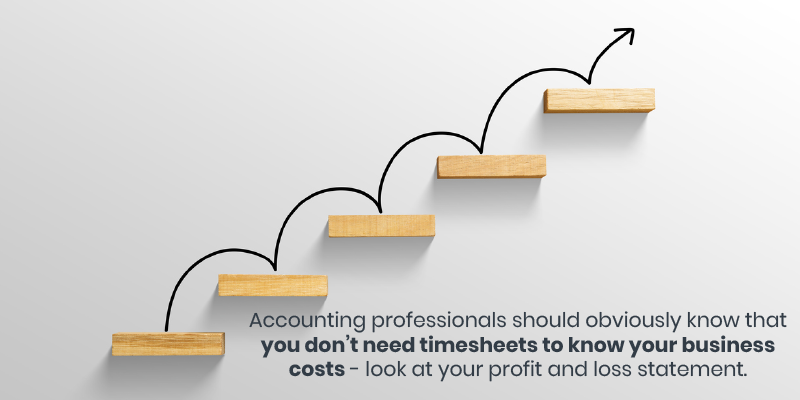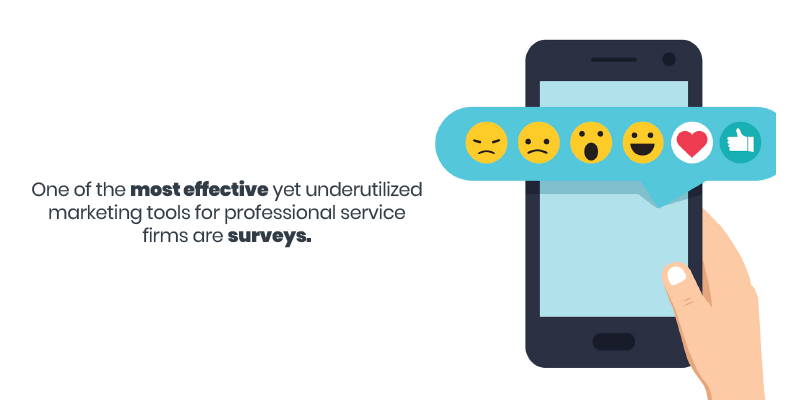Get Accounting Referrals and Attract the Clients You Want
This chapter preview comes from the Double Your Accounting Firm book (Amazon)
Darren Root, Founder of Rootworx and renowned influencer and speaker in the accounting world, built a firm into seven figures before the age of 30. But he was unhappy. He spent so much time in the office and almost no time at home with his wife and three kids. Something had to change.
One morning, he woke up as normal and fired 80% of his clients and sent them to a competitor. He kept the remaining 20% and used them build his company. That small group represented his favorite clients, who he actually enjoyed working with.
To have a firm grow and do so well while still enjoying your life and work is the definition of success. For many firms, success rests solely on a dollar figure per year. What if you could reach that same figure but only with clients you actually enjoy working with?
You could stop just accepting everyone who has a wallet. Many might not be the right fit for you, yet you continue to work with them. Even millionaires stress about their money because they worry it could all be gone, so we put up with clients we don’t enjoy just to pad the accounts a bit.
In Chapter 3, we went through how to market your firm and bring in clients like clockwork, using inbound strategies, LinkedIn and networking. A last piece to the pie is referrals.
It makes my head spin when firm owners brag about “not having to spend any money on marketing,” because of the referrals they get. Referrals are unpredictable. Yes, they are nice, but doubling your firm requires systems and predictability. Referrals and marketing must have a system.
Referrals can bring in your best clients. It’s proven. Referrals pay more, on average, than clients brought in other ways. It’s a catch-22 as referrals are often unpredictable, as well. This is why I recommend the two-pronged approach of marketing and referrals.
If you are bringing in new clients every week who you love working with, you’re in a great spot. I would still absolutely recommend working through the marketing strategies in Chapter 3 as a two-pronged attack to growth.
You might already see a trickle of referrals coming in organically. We can jumpstart that even more. Jay Abraham considers waiting for referrals to be passive, but getting them to come on their own is active.
Being passive with referrals is the reason firms don’t see more referrals or get the type of referrals they want. They are afraid of making their clients uncomfortable, but you can bring in active referrals without it being uncomfortable or feeling salesy.
Before you even think about going after referrals though, you must start with your confidence. Successful referrals begin with 100% confidence and love for what you offer.
If you don’t have this confidence and love, it comes across to your clients.
Think about one team member who absolutely can’t live without doing accounting work and argues its importance as compared with someone who is unsure about each tax return that goes out the door and isn’t enthusiastic with clients. I guarantee the former will get more referrals than the latter.
In this chapter, you’ll flesh out why your clients pick you, especially your best ones. This makes it easier to ask for referrals later on. We will also touch on points from
Chapter 1 to help you bring on clients that are the right fit for the firm. Then, we’ll go through how to nurture your clients to make them want to refer you. Finally, I will tell you the absolute best methods for asking for referrals.
But first, let’s start off with a review of terms.
Your Unique Selling Point
We’ve gone over your USP already, so if you don’t remember this, you will want to go back and review prior chapters. When you’ve done that, come back with your USP.
Before we get into this section, you should know the value you want to bring to the marketplace and what type of clients you wish to attract. Remember, you must have a target market and message.
Your market is the type of industry and/or service you wish to be an expert in. For example, you might want to be the go-to CPA firm for construction companies.
Then, your message attracts your market as you highlight the results you bring to your ideal client base. Earlier, we used this example: we help seven- and eight-figure construction companies automate their back office finances, so they can they increase cash flow, grow faster, and save more money on their returns.
These form the basis for your USP. Your next step is figuring out how your clients view your USP. What do you solve for them?
The easiest way to do this is to just ask! Sit down individually with a handful of clients you trust and enjoy working with. You can do that by sending them this email:
“Hi [Client Name],
Looking forward to discussing how last quarter went. At the end of our meeting, would you be able to take an extra 10 minutes to give me feedback on how our relationship is going and addressing your good and bad experiences?
Thanks,
Joe
Most clients would be happy to do this. Your goal is to figure out what you do better than others that your clients recognize. Questions you can ask, include:
- What keeps you coming back to work with us each year?
- What do you enjoy most about working with us?
- What trouble spots have you found?
- How does our relationship compare to other firms you’ve worked with in the past?
All you’re looking for is a pattern for what you do better.
- “You always sound happy to answer all my questions.”
- “You’ve saved me more money than any other firm.”
- “I get my work on time.”
- “You always exceed my expectations for each engagement.”
These are just examples. The reason this is critical is because your ideal clients will be similar in many ways to your current, most trusted clients. Your ideal clients might all value punctuality, great service, and consistency.
These traits allow you to form an avatar of who you wish to work with. We already discussed, in Chapter 3, how to narrow down your market and client avatar. This USP allows you to speak to and nurture your current client base to prime them to refer others to you.
As you talk with new prospects, you will be able to compare notes to what your ideal client wants and what a new prospect might look for. “Birds of a feather…” comes into play here.
Obviously, before working with a client, you won’t know how they act and work. These clues towards your USP or away from it can provide that much- needed insight.
Your first steps are to set up a time with 3–5 of your best clients and ask them these questions. In your day-to-day interactions, take note of when they compliment your work or thank you. Those can clue you into what they believe your USP is.
Bringing on the Right Clients
As another review from prior chapters, your client base can make or break your team. A major issue in firms, at the moment, is retaining the best and brightest talent, especially for the future.
With referrals, clients will tend to refer other clients like them. If your bad clients are referring more bad clients, you run into a disastrous problem. Your top clients may not know the steps to referring correctly, so you might not get referrals from them.
The fewer conversations you can have with referrals from your bad clients, the better, I’m certain. For example, you might decide your core market is medical professionals, but your lone car dealership client keeps referring in other dealerships and it overwhelms your team. At the same time, if your car dealership client isn’t a great client, most likely his referrals will be of the same caliber.
That could be a demoralization bomb.
This all rolls back to your sales process and on boarding, coupled with your USP. Ask yourself during the initial stages, these questions:
- Is this client right for the firm?
- Do they appear similar to my ideal clients?
- What do they believe our USP is?
- Do they respect me?
You will get referrals from outside your ideal market and they could be fantastic clients. You still need to run them through your USP tests to find the similarities they share with your ideal prospects.
During the initial discussions, you are listening to their pain. Bring up your USP and see how it works with the new client. Is your USP resonating with them or are they solely focused on another point?
These are the red flags to watch out for before signing on the bottom line.
Go back to Chapter 1 to learn more about onboarding correctly and making sure they are the right fit. These are the pillars for setting your clients up for sending over referrals.
What you can expect is, for anyone, pushing their friends into a sales pitch isn’t what they typically wish to do. It’s the reason you need to make sure you are nurturing and caring for your clients as you go, to make them feel comfortable to send their friends and colleagues to you.
Nurturing Your Current Clients
“Become a trusted advisor, not just a paper-cruncher.”
Shelley Johnson, Managing Partner of Allman Johnson CPAs, has grown her firm organically through the years.
Clients continue to come back to her firm because a deeper relationship forms when the client–CPA relationship gets tossed out and a more personal relationship takes its place. Too often you will get bogged down in the weeds with deadline stress and various projects that come up.
What happens, then, is you only talk to a client in January and swap emails and calls until April 15th. Compare that to how Shelley will advise you to approach it. She asks herself, “Which client can I help today and who may need it?”
For bonus points, her firm works on a fixed pricing model, so clients can feel comfortable on the phone without worrying about a bombshell on their bill.
As you develop your market and your message, you will be more honed in on your ideal client’s industry. This allows you to relate to them more personally with advice based on the industry and understand their situation much better.
Your first step to nurturing current clients is asking, “Where can I provide even more value?”
Steve Pipe, founder of ImproveYourPractice, has five checklist items to make sure clients are getting enough value and the right kind of it. His five points are:
- Do something before a client requests it. Read their mind and know their needs.
- Make a special deliverable absolutely relevant to them, perhaps a piece of content based on a recent discussion. This does not apply to your monthly newsletter.
- Provide something that makes a difference in their personal or work life.
- Do something special for them and do it pro bono the first time as a surprise for them.
- Duplicate it across clients. Systematize the benefit.
Nurturing a client goes far beyond just doing your work. Where can you “wow” a client so they always remember and think of you?
Every interaction with a client is an opportunity to nurture them. Perhaps they are having a rough day and need someone to listen. Instead of ushering them off the phone, take the extra 15 minutes and listen to what they have to say. When your client tells you they are distracted because their air conditioner just went out, send them a referral to your local A/C man.
The more a client trusts you, the more they open up to you. When you know them better, you can solve more of their problems, meaning you can come up with more service offerings. Clients will pay for you to solve their problems, so the more valuable you come across to them, the more they are likely to pay for your services and keep coming back to you.
Steve says, “Stand up for premium services. Higher prices attract better clients.” You can charge more when you constantly go above and beyond because you aren’t a commodity anymore.
Articles to Go Deeper
- How to Ask a Client for Referrals (Without Feeling Uncomfortable)
- 2 simple techniques to get more referrals for accountants and bookkeepers
- A Bulletproof Script For Meeting Accounting Prospects So They Become Clients
- Allman Johnson CPAs & Advisors
- 5 Ways To Get Prospective Customers to Choose You
- How to Develop and Maintain Client Relationships



































